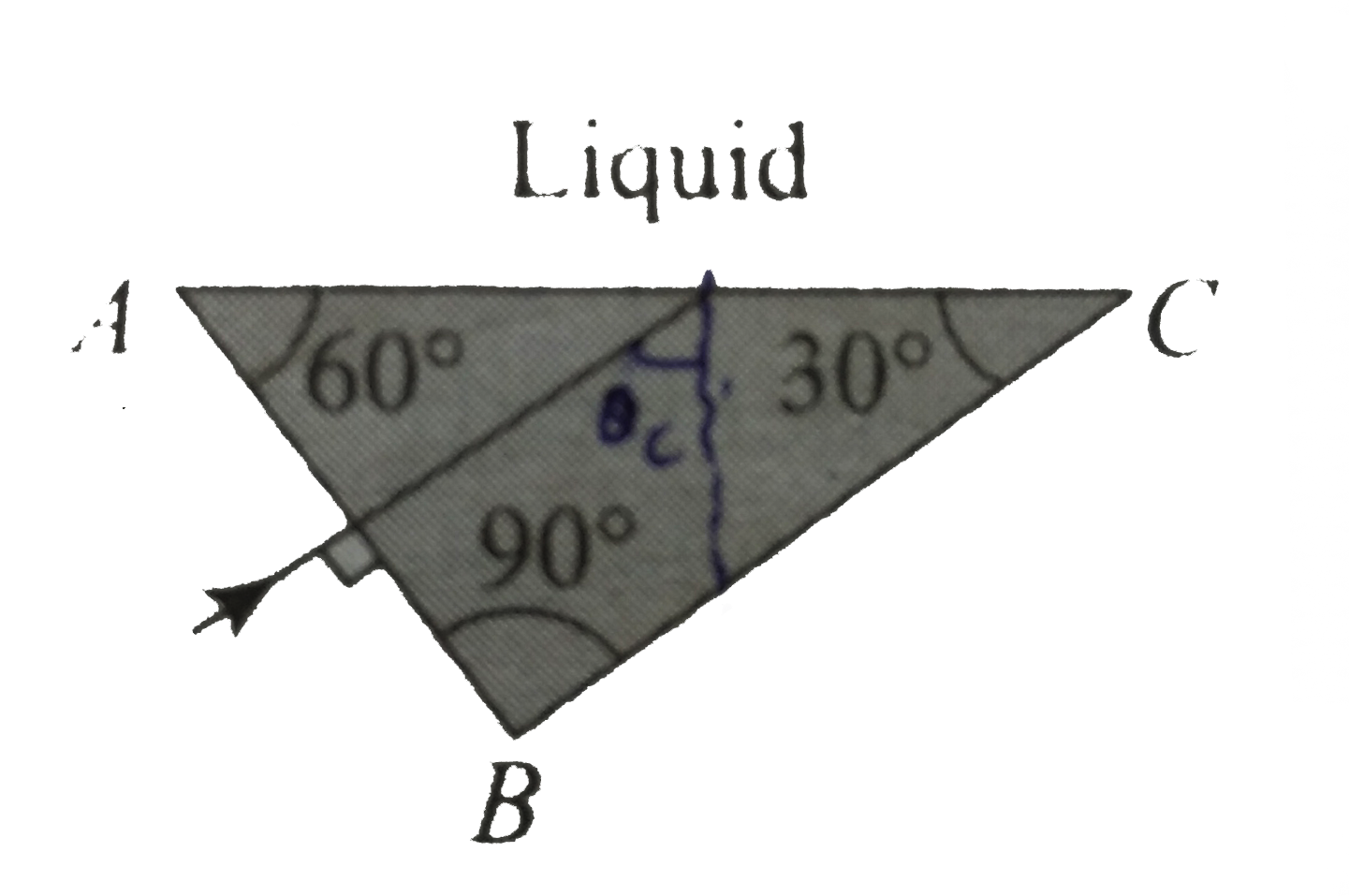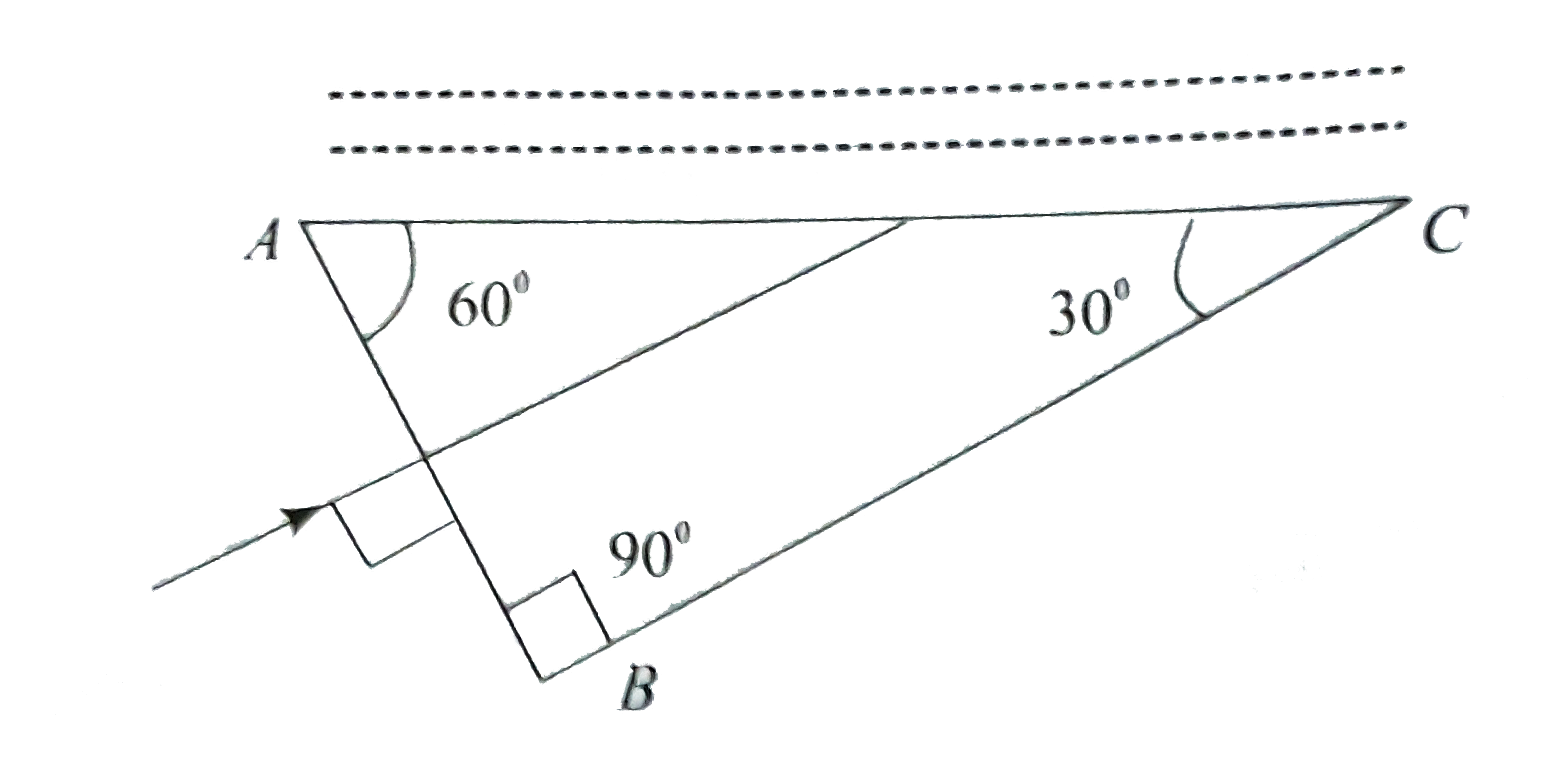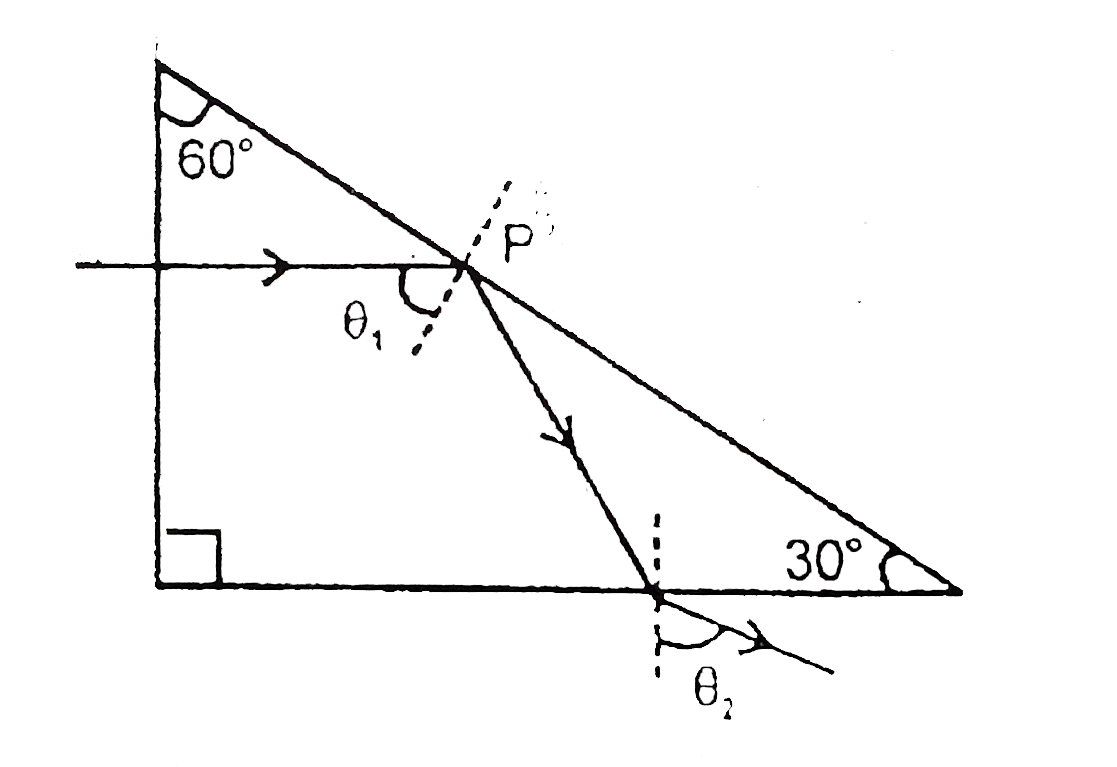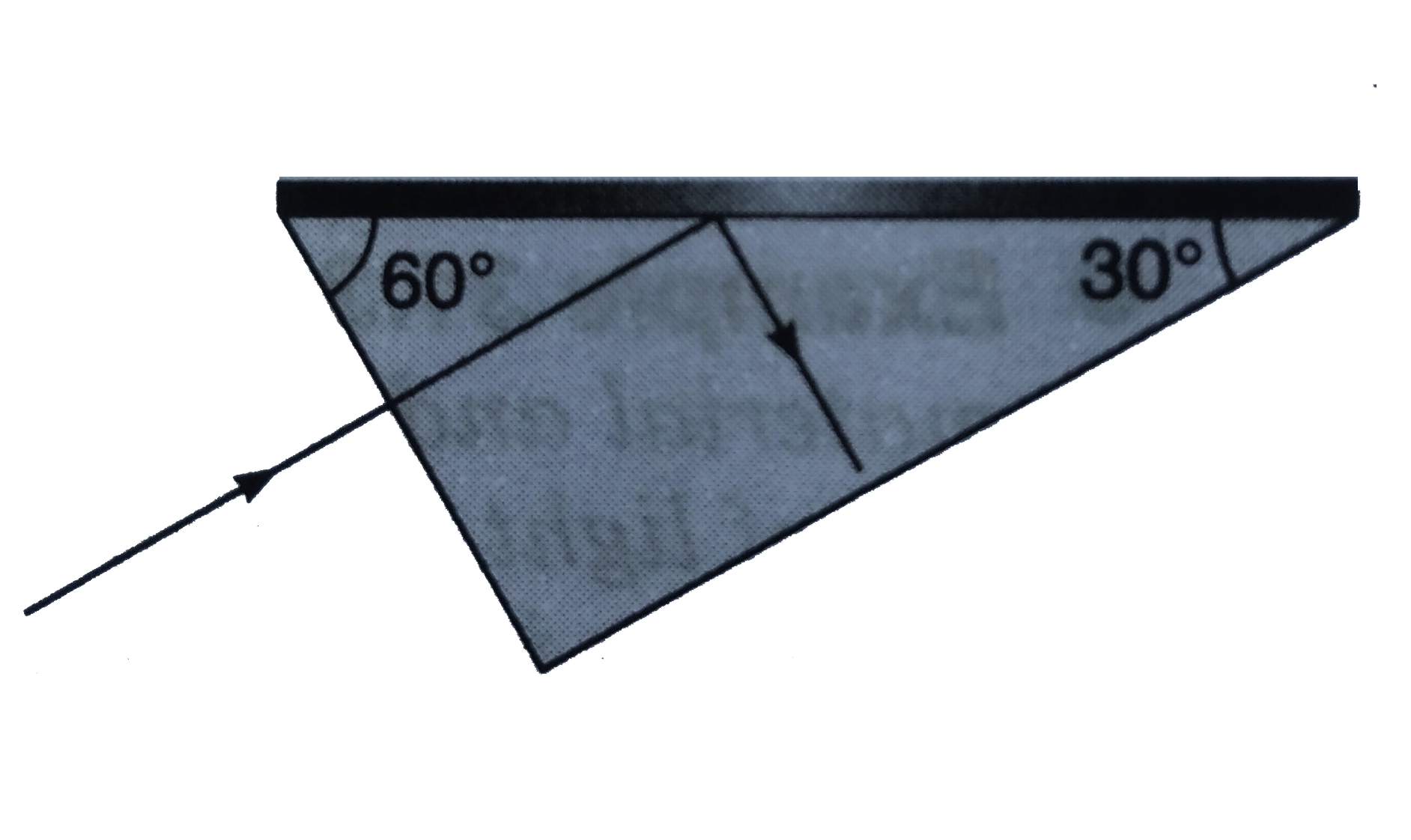Light is incident normally on face AB of a prism as shown in Figure. A liquid of refractive index μ is placed on face AC of the prism. The prism is made of glass of refractive indes 3/2 . Find the limits of μ for which total internal reflection takes place on the face AC.

Critical angle between glass and liquid face is
sinθc=3/2μ=32μ
Angle of incidence at face AC is 60∘ , i.e., i=60∘ .
For total internal reflection to take place,
i=θcorsini>sinθc
or sin60∘>32μ or √32>32μ
or μ>√3
Topper's Solved these Questions
- BOOK - CENGAGE PHYSICSCHAPTER - GEOMETRICAL OPTICSEXERCISE - Exercise1.522videos
GEOMETRICAL OPTICS
- BOOK - CENGAGE PHYSICSCHAPTER - GEOMETRICAL OPTICSEXERCISE - Exercise1.615videos
GEOMETRICAL OPTICS
- BOOK - CENGAGE PHYSICSCHAPTER - GEOMETRICAL OPTICSEXERCISE - Exercise1.325videos
GEOMETRICAL OPTICS
- BOOK - CENGAGE PHYSICSCHAPTER - FRICTIONEXERCISE - QUESTION BANK1videos
FRICTION
- BOOK - CENGAGE PHYSICSCHAPTER - GRAVITATIONEXERCISE - Question Bank39videos
GRAVITATION
Similar Questions
As shown in figure, light is incident normally on one face of the prism. A liquid of refractive index μ is placed on the horizontal face AC. The refractive index of prism is 3/2 . If total internal reflection taken place on face AC, m should be less than I√394, where I is ann integer. Find the value of I.
 View Solution
View SolutionA ray of light incident normally on the first face of a glass prism of refractive index 1.6 just emerges from the other face. Find the angle of the prism.
View Solution
Knowledge Check
- Question 1 - Select One or More

A ray of light is incident normally on one face of a prism as shown in figure. The refractive index of the material of the prism is 53 and the prism is immersed in water of refractive index 43, thenAThe angle of emergence θ2 of the ray is sin−2(58)BThe angle of emergence θ2 of the ray is sin−1(54√3)CThe angle of emerrgence θ2 of the ray is sin−1(73√4)DTotal internal reflection will not occur at P if the refractive index of water increases to a value greater than 52√3 by dissolving some substance. - Question 2 - Select One
If a light ray incidents normally on one of the faces of the prism of refractive index 2 and the emergent ray just grazes the second face of the prism, then the angle of deviation is
A0∘B30∘C45∘D60∘ - Question 3 - Select One
A ray of light is incident normally normallyh on one of the faces of a prism of apex angle 30∘ and refractive index √2. The angle of deviation of the ray is ________________ degrees.
A15∘B30∘C45∘D60∘
A ray incident on the face of a prism is refracted and escape through an adjacent face. What is the maximum permissible angle of the prism, if it is made of glass with a refractive index of μ=1.5?
View SolutionLight is incident normally on the short face of a 30∘−60∘−90∘ prism. A liquid is poured on the hypotenuse of the prism. If the refractive index of the prism is √3, find the maximum refractive index of the liquid so that light is totally reflected.
 View Solution
View SolutionA ray of light is incident horizontally on the face AB of the.right angled prism as shown in the figure. If the ray emerges grazing the surface AC, find the value of ϕ. Refractive index of the material of the prism is given to be n.
 View Solution
View SolutionA ray of light is incident normally on one face of a right-angled isosceles prism and then it grazes the hypotenuse. The refractive index of the material of the prism is
View SolutionAssertion: White light is incident on face AB of an isosceles right angled prism as shown. Colors, for which refractive index of material of prism is more than 1.414, will be able to emerge from the face AC.

Reason: Total internal reflection cannot take place for the light travelling from a rarer medium to a denser medium.View Solution

